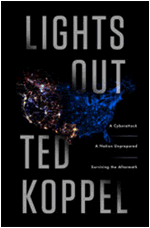WHY OUR CO2 EMISSIONS
DO NOT INCREASE ATMOSPHERE CO2
PART 1
By
Dr. Ed Berry, PhD, Atmospheric Physics
December 26, 2016
NewsWithViews.com
The genius of Al Gore
Give Al Gore an A for marketing and an F for science. But, hey, we all know the sale is in the marketing. The genius of Al Gore was to make his invalid myth simple:
1. Our CO2 emissions increase Atmosphere CO2, and
2. Atmosphere CO2 heats the Earth.
What could be simpler? Al Gore assumed his two invalid claims were true. His marketing job was to make you believe bad things happen when Atmosphere CO2 rises.
Everybody believed Al Gore. Well, almost everybody. His simple, inaccurate description of how our climate works created a generation of science deniers, some with PhD’s. Al Gore turned climate science into a political-environmental movement.
The alarmists’ goal is to scare you into believing our CO2 causes climate change. Once scared into an invalid belief, you will tend to hold that invalid belief forever.
Those who believe Al Gore’s marketing believe they can make the Earth cooler by reducing our CO2 emissions. Al Gore has sold them a bridge to nowhere.
Climate alarmists are like the Aztecs who believed they could make rain by cutting out beating hearts and rolling decapitated heads down temple steps.
Both of Al Gore’s two assumptions are wrong. This article shows how his first assumption is wrong. Nature, not human CO2 emissions, causes the changes in Atmosphere CO2.
The Logical Fallacy of Climate Change
Climate alarmists tell us climate change causes bad stuff to happen, and if bad stuff happens, they claim it is our fault. The alarmist logic goes like this:
If human CO2 causes climate change, then bad stuff will happen.
Bad stuff happens. Therefore, human CO2 causes climate change.
This alarmist claim is the well-known logical fallacy called “Affirming the Consequent.” Here is an example that illustrates this logical fallacy:
If Bill Gates owns Fort Knox, then Bill Gates is rich.
Bill Gates is rich. Therefore, Bill Gates owns Fort Knox.
The logical error is to assume that every result has only one possible cause. Shrinking glaciers do not prove we caused them to shrink.
The relevant climate change questions are about cause and effect.
The relevant climate change questions are not whether the climate has changed. Climate always changes. The only relevant climate change questions concern cause and effect:
1. Do Human CO2 emissions significantly increase Atmosphere CO2?
2. Does Atmosphere CO2 significantly increase climate change?
Climate alarmists must prove BOTH answers are YES. Otherwise, they lose their case.
This article shows why the answer to the first question is NO. A future article will show why the answer to the second question is also NO.
Why Human CO2 emissions do not cause climate change.
Fig. 1 shows why nature’s CO2 emissions, not Human CO2, are the major cause of the observed change in Atmosphere CO2.
All numbers in this article represent amounts of CO2. CO2 units are in parts per million by volume (ppmv) of CO2. Gigatons of Carbon (GtC) convert to ppmv using: 1 ppmv of CO2?= 2.13 GtC.
In the middle of Fig. 1 is a box that represents the CO2 in our atmosphere. The amount of CO2 in our Atmosphere in 2015 was 400.
Land and Ocean CO2 emissions into the Atmosphere total about 100 each year (plus or minus ten percent). An almost equal amount flows from Atmosphere CO2 to Land and Ocean CO2 each year (CDIAC, 2016; IPPC, 2007a; IPPC, 2007b).
Let’s use an analogy to help understand Fig. 1. Let water in a lake represent Atmosphere CO2.
Two large rivers flow into the lake. One river represents Land CO2. The other river represents Ocean CO2. Together, they supply about 100 units per year to the lake.
Lake water spills over a dam. The inflow of 100 raises the lake level until the outflow over the dam equals the inflow.
Similarly, the flow of Land and Ocean CO2 into our Atmosphere increases the amount of CO2 in our Atmosphere. Increased Atmosphere CO2 increases CO2 outflow to Land and Ocean. Like the lake, Atmosphere CO2 is at equilibrium when outflow equals inflow.
If
inflow exceeds outflow, the lake level (Atmosphere CO2) will rise until
outflow equals inflow. If outflow exceeds inflow, the lake level will
fall until outflow equals inflow.
Fig. 1. Our Atmosphere’s CO2 is like a big lake. It receives CO2
from two big rivers (Land and Ocean) and from one small river (Human).
Temperature controls CO2 flow from Land and Ocean to Atmosphere. Lake
level rises or falls until outflow equals inflow.
The dam separates the CO2 spill into two parts. One part goes back to Land. The other part goes back to the Ocean.
Fig. 1 includes the much longer CO2 cycle where Land CO2 becomes Fossil Fuels. Human CO2 emissions complete this CO2 cycle by returning Fossil Fuel CO2 to the Atmosphere.
A small river, with a flow of 4, also flows into the lake. This small river represents the Human CO2 flow into our Atmosphere. This small river adds only 4 percent to the Land and Ocean flow of 100 into the lake. This small river raises the total flow into the lake to 104. This will raise the lake level until the outflow equals 104.
The contribution of Human CO2 to the new lake level (Atmosphere CO2) is only 4 percent of the lake level above the dam, or only 4 percent of the total flow into and out of the lake. Ninety-six percent of the CO2 flow into and out of our Atmosphere is due to nature.
 Fig.
1 shows a scenario where the total inflow into the Atmosphere equals
the total outflow, and where the Human CO2 contribution goes to Land
to support vegetation growth. Because inflow equals outflow, Atmosphere
CO2 will remain constant whether Atmosphere CO2 is 400 or 300 or any
other value.
Fig.
1 shows a scenario where the total inflow into the Atmosphere equals
the total outflow, and where the Human CO2 contribution goes to Land
to support vegetation growth. Because inflow equals outflow, Atmosphere
CO2 will remain constant whether Atmosphere CO2 is 400 or 300 or any
other value.
Salby (2016) comes to the same conclusion. Salby (2012) authored the comprehensive textbook, “The Physics of the Atmosphere and Climate.”
Our Atmosphere does not treat Human CO2 any differently than CO2 from Land and Ocean. Human CO2 is simply another input to Atmosphere CO2 that will increase the outflow of Atmosphere CO2 to Land or Ocean by the same amount as the Human CO2 flow into the Atmosphere.
Temperature controls Atmosphere CO2.
Salby (2015) shows, directly from data and with no hypotheses, that Temperature sets the rate at which Atmosphere CO2 increases or decreases. This means temperature sets the equilibrium value of Atmosphere CO2. Fig. 1 indicates the Temperature effect by the symbol for the Sun.
If the Sun, cloud cover, or ocean currents change to increase temperature, the increased temperature will cause more Land and Ocean CO2 to flow into Atmosphere CO2. This will increase Atmosphere CO2 until outflow balances inflow.
Temperature is like the accelerator in your car. Atmosphere CO2 is like the speed of your car. Atmosphere CO2 follows Temperature like the speed of your car follows your accelerator. Press down, your car speeds up. Let up, your car slows down.
Contrary to what Al Gore told you, CO2 does not control temperature. Temperature controls CO2.
Climate alarmists present their case.
Climate alarmists claim our CO2 emissions cause 100 percent of the observed rise in Atmosphere CO2. We will show why their claim is unphysical and invalid.
Here is the alarmists’ four step argument they claim proves their case:
1. From 1750 to 2010, humans added 171 units of CO2 to our Atmosphere and Atmosphere CO2 increased by 113 units. This leaves 58 units.
2. Land and Oceans absorbed the 58 units of Atmosphere CO2.
3. Therefore, Land and Oceans are net absorbers of CO2.
4. Therefore, Human CO2 caused 100 percent of the increase in Atmosphere CO2 since 1750 and 1960.
Here is my rebuttal to the Alarmists case:
During the same period that Human CO2 emissions added 171 units of CO2 to our Atmosphere, the Land and Ocean CO2 emissions added 26,000 units to our Atmosphere. Land and Ocean also absorbed about 26,000 units of CO2 from our Atmosphere, including the 171 units from Human CO2. There were no 58 units left over.
 Fig.
2 illustrates how Land & Ocean CO2 emissions compare to Human CO2
emissions during this period. The ratio is 152 to 1.
Fig.
2 illustrates how Land & Ocean CO2 emissions compare to Human CO2
emissions during this period. The ratio is 152 to 1.
Fig. 2. Land and Ocean CO2 emissions are 152 times greater than Human CO2 emissions during the period from 1750 to 2010.
The
alarmists case fails because it omits Land and Ocean CO2 emissions.
Their omission leaves Human CO2 emissions as 100 percent and makes their
claim that Human CO2 caused ALL the Atmosphere CO2 increase artificial.
During the 260-year period, Human CO2 caused “at most” 0.7
of the 113 rise in Atmosphere CO2.
“At most” is because Salby (2015) showed that Temperature controls the rate of change of Atmosphere CO2, and the equilibrium value of Atmosphere CO2. Under that scenario, Land and Ocean emissions and absorptions will adjust to neutralize the effect of Human CO2 emissions, and the effect of Human CO2 on Atmosphere CO2 will be ZERO!
The Atmosphere does not know whether its CO2 came from Land, Ocean, or Human CO2 emissions. No matter what the source, the greater the total Atmosphere CO2, the greater the flow of Atmosphere CO2 to Land and Ocean CO2. Therefore, Atmosphere CO2 will seek the same balance level with or without Human CO2 emissions.
Land can absorb CO2 from the Atmosphere while Ocean provides CO2 to the Atmosphere. Fig. 1 shows this scenario where Land absorbs ALL Human CO2 emissions while Atmosphere CO2 remains constant.
In 2015, Human CO2 emissions were 4 percent of Land and Ocean CO2 emissions. Therefore, Human CO2 emissions caused “at most” only 4 percent of the rise in Atmosphere CO2.
A small river with a inflow of 4 cannot cause an outflow of 104. Yet this is what climate alarmists claim happens. The following tale illustrates the absurdity of the alarmist case:
An elephant crosses a bridge. A mouse, riding on the elephant’s back, says to the elephant, “We sure made that bridge shake, didn’t we?”
The alarmists’ case is a shell game. They would flunk physics.
Three more reasons Human CO2 emissions do not control Atmosphere CO2.
Fig. 3 shows Atmosphere CO2 scaled to fit Human CO2 emissions and the annual change in Atmosphere CO2 (NOAA, 2016; CDIAC, 2016; IPCC, 2007b).
Salby (2016) makes the following three arguments using Fig. 3.
1. Human CO2 emissions increased significantly after 2002 due to China (Oliver, 2015). Yet Atmosphere CO2 continued its same steady rise.
2. Annual changes in Atmosphere CO2 (jagged line) do not follow the smooth increase in Human CO2 emissions. (Also, Courtney, 2008.)
3. In some years, particularly the period from 1988 to 1993, Atmosphere CO2 falls while Human CO2 emissions continue to rise.
Therefore,
Human CO2 emissions do not control Atmosphere CO2.
 Fig.
3. Human CO2 emissions, annual change in Atmosphere CO2, and Atmosphere
CO2 scaled (by subtracting 266 and dividing by 50).
Fig.
3. Human CO2 emissions, annual change in Atmosphere CO2, and Atmosphere
CO2 scaled (by subtracting 266 and dividing by 50).
Conclusions
Climate alarmists claim Human CO2 causes ALL the increase in Atmosphere CO2. Their argument fails because they omit Land and Ocean CO2 emissions that are many times greater than Human CO2 emissions.
Climate alarmists also omit how Land and Ocean CO2 emissions and absorptions balance Atmosphere CO2 with or without the presence of Human CO2. Temperature sets the equilibrium Atmosphere CO2 independent of Human CO2 emission.
Here are three more reasons Human CO2 does not cause ALL the rise in Atmosphere CO2:
1. Human CO2 emissions increased significantly after 2002, yet Atmosphere CO2 continued its same steady rise.
2. Annual changes in Atmosphere CO2 do not follow the smooth increase in Human CO2 emissions.
3. In some years, particularly the period from 1988 to 1993,
Atmosphere CO2 falls while Human CO2 emissions continue to rise.
Therefore, Human CO2 emissions do not increase Atmosphere CO2.
Most public climate alarmist arguments use this invalid logic:
|
|
If human CO2 causes climate change, then bad stuff will happen.
Bad stuff happens. Therefore, human CO2 causes climate change.
Such arguments are invalid because they do not prove Human CO2 caused the change.
If we stopped all Human CO2 emissions today, it would not change future Atmosphere CO2. For part two click below.
Click here for part -----> 1, 2,
To comment on this article, please click here.
© 2016 Edwin X Berry, Ph.D – All Rights Reserved
Dr. Ed Berry is editor and publisher of edberry.com based in Bigfork, Montana. He has a PhD in Physics, is a Certified Consulting Meteorologist, and an expert in climate change who takes the position that our carbon dioxide emissions are insignificant to climate change.
Follow
me on Twitter
& Facebook.
To comment on this article, please
click here.
Website:
EdBerry.com














 Share This Article
Share This Article




